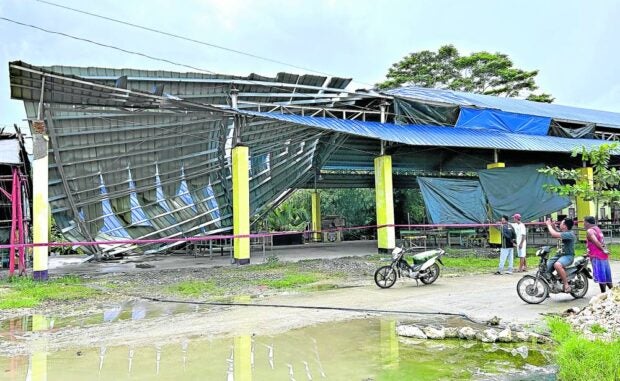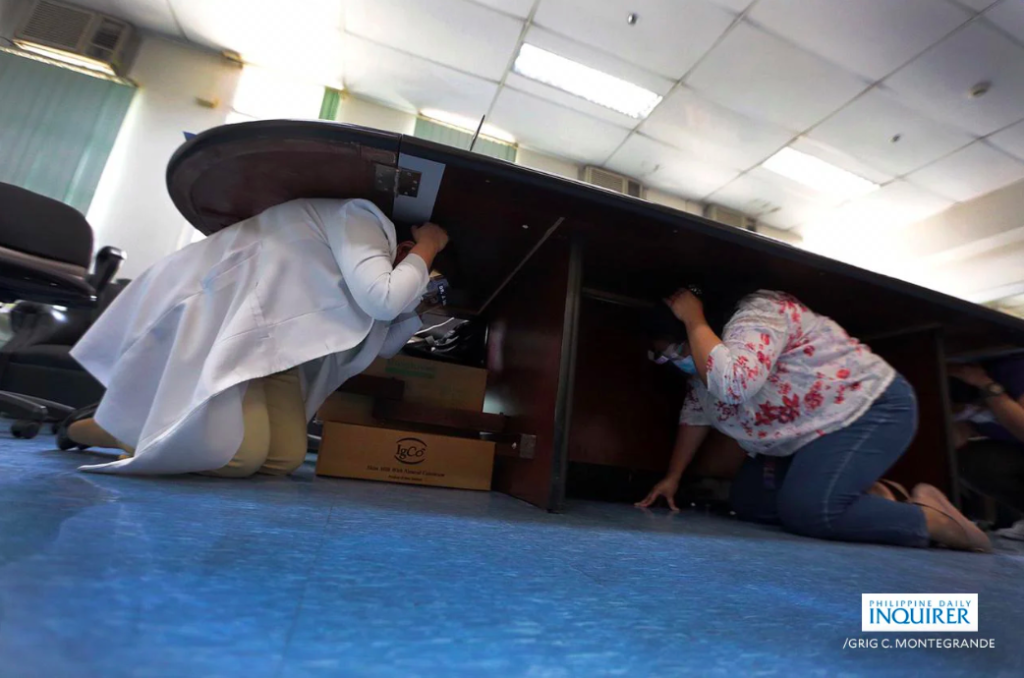EXPLAINER: Earthquake terms you need to know

SURIGAO DEL SUR QUAKE AFTERMATH. Part of a multipurpose building in Tagbina town in Surigao del Sur collapsed after a magnitude 7.4 earthquake struck on December 2, parts of eastern Mindanao includiing Surigao del Sur. (Photo by ERWIN MASCARIÑAS / Inquirer Mindanao)
CEBU CITY, Philippines — What’s the difference between an earthquake and an aftershock? And what does intensity mean?
Following the 7.4-magnitude earthquake that rocked the eastern portions of Mindanao on December 2, Filipinos have been dealing with various terminologies related to earthquakes.
At some point, they may get confusing. Worse case scenario, they may get misinterpreted and may even mislead the public, causing unnecessary panic.
In this article, we’ve compiled a list of some of the most common terms associated with earthquakes, together with their explanation provided by the Philippine Institute of Volcanology and Seismology (Phivolcs).
READ: Earthquake of magnitude 6.8 latest temblor to shake Surigao del Sur
Earthquake
An earthquake occurs when there’s a sudden movement of rock materials below the earth’s surface. They can be weak, which cannot be detected on the ground, or violent like the recent 7.4-magnitude that struck near the Philippine Trench last December 2.
Temblor
This is another name for an earthquake.
Magnitude
Magnitude is used to describe how strong an earthquake is at its focus or center. Phivolcs defines magnitude as ‘proportional to the energy released by an earthquake at the focus’. Scientists determine the magnitude of the earthquake using instruments called seismograph.
Intensity
On the other hand, intensity refers to the strength perceived and felt by people. Intensities are ranked in Roman numerals, with those located near the epicenter having higher intensities. In the Philippines, the intensity of an earthquake is determined using Phivolcs’ Earthquake Intensity Scale (PEIS).
Tectonic Earthquake
There are two types of earthquakes, and one of them is the tectonic. These are earthquakes produced by sudden movement along faults and plate boundaries, Phivolcs said. The 7.4-magnitude earthquake that struck the coasts off of Mindanao is classified as tectonic.
Volcanic Earthquake
The other type of earthquake is the volcanic earthquake, which is induced by rising lava or magma beneath active volcanoes.

(FILE) Employees of Quezon City General Hospital participate in a nationwide simultaneous earthquake drill on Thursday, September 10, 2020. (INQUIRER/GRIG C. MONTEGRANDE)
READ: Earthquake: Cebuanos told to start preparing for it
What to do during earthquakes
Unlike other natural disasters, earthquakes cannot be predicted. But this does not mean people should not prepare in the event of one.
Engineer Robinson Jiorgio, director of Phivolcs in Central Visayas (Phivolcs-7), urged the public not to panic during an earthquake. He added that the presence of mind would help individuals avoid injuries and potential harm, including death.
It is also important to remember the key lessons learned during earthquake drills such as observing the duck, cover, and hold response once the shaking of the ground has stopped or paused.
People can also start taking precautionary measures even before an earthquake strikes, according to the World Health Organization.
These included having an emergency kit on standby in case there’s a need to evacuate, and locating the safest place to take shelter during an earthquake.
Identifying evacuation or exit routes is also vital.
RELATED STORIES
Strong earthquake hits Surigao del Sur, tsunami alert issued by Phivolcs
Magnitude 6.9 quake jolts Hinatuan in Surigao del Sur, tremors felt in Cebu
Disclaimer: The comments uploaded on this site do not necessarily represent or reflect the views of management and owner of Cebudailynews. We reserve the right to exclude comments that we deem to be inconsistent with our editorial standards.
